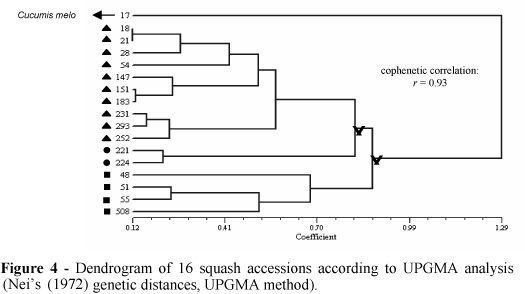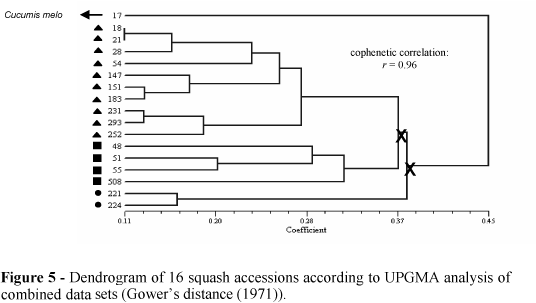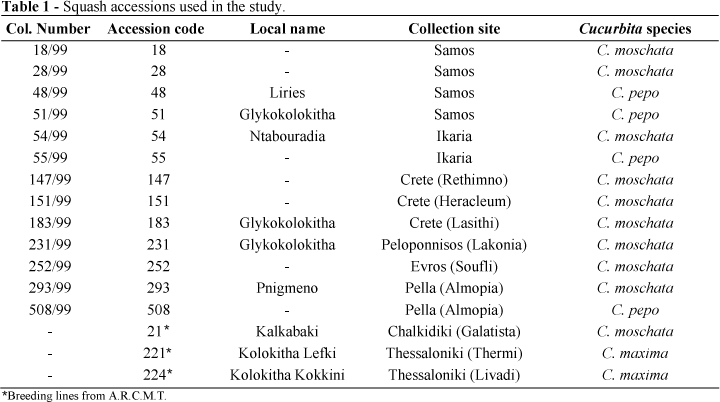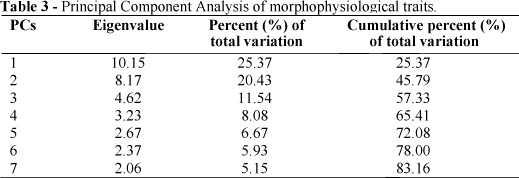In this work, the part of the squash core collection, maintained in the Greek Gene Bank, was assessed using the morphological and molecular data. Sixteen incompletely classified accessions of the squash were characterized along with an evaluation of their resistance against two isolates of Fusarium oxysporum. A molecular analysis using Random Amplified Polymorphic DNA (RAPD) markers was also performed, revealing high level of polymorphism. To study the genetic diversity among the squash accessions, a clustering procedure using Unweighed Pair Group Method and Arithmetic Average (UPGMA) algorithm was also adopted. Two independent dendrograms, one for the morphophysiological and one for molecular data were obtained, classifying the accessions into two and three main clusters, respectively. Despite the different number of the clusters there were many similarities between these two dendrograms, and a third dendrogram resulting from their combination was also produced, based on Gower's distance and UPGMA clustering algorithm. In order to determine the optimal number of clusters, the upper tail approach was applied. The more reliable clustering of the accessions was accomplished using RAPD markers as well as the combination of the two different data sets, classifying the accessions into three significantly different groups. These groups corresponded to the three different cultivated species of C. maxima Duch., C. moschata Duch., and C. pepo L. The same results were also obtained using Principal Component Analysis.
Cluster analysis; Gower's distance; morphophysiological characteristics; Principal Component Analysis; RAPD markers; winter squash














